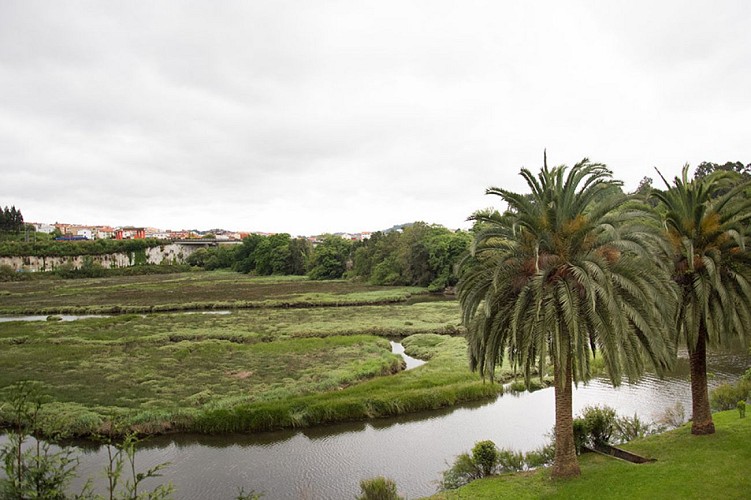Alert
Alerts
THE MARSHES “LAS MARISMAS”

Description
On the road to Miño we cross the marshes formed in the estuary of the river Baxoi, which meets the sea next to Grande de Miño beach.
A “marisma” (from the Latin maritimae, land immediately by the sea) or “marsh” is a humid zone characterised by the almost constant presence of water in the ground and of seawater due to the ebb and flow of the tide. In Galicia they are also known as “xunquieras”, for the predominant presence of reeds. There was a time in which these areas were considered dangerous for health reasons and economically unproductive due to the periodical flooding which meant that plants that were considered “useful” would not grow. Nowadays this view has changed and it is understood that these are important ecosystems that should be conserved. The wide diversity of botanical species serves as a habitat and source of food for a large number of animals.
The origin of the marshes is linked to the movement of the water level in the postglacial eras, leaving the areas of land which were low-lying and close to the sea inundated. These natural spaces are very vulnerable to contamination damage but also to dredging. The vegetation varies from place to place, depending on the predominance of seawater or river water.
Technical Information
Altimetric profile
Data author

